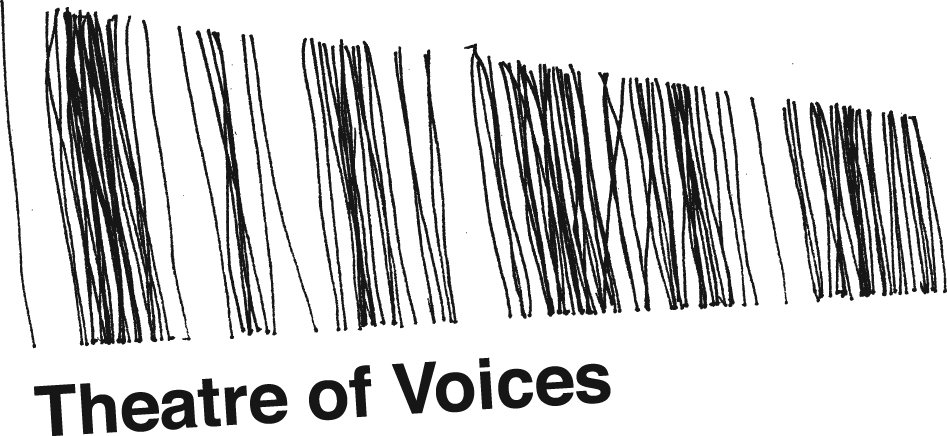A performance of the highest calibre (Pärt’s Passio)
26.03.13, culturenorthernireland.org
It's Monday evening in Holy Week, and an icy wind is blowing tufted flakes of snow around the precincts of St Peter's Cathedral, Belfast.
Although the weather is unseasonable, it seems curiously appropriate for what is happening inside the building – a rare performance of Estonian composer Arvo Pärt's Passio by the National Chamber Choir of Ireland.
Passio is a bleak, unvarnished setting of texts from St John's gospel describing Christ's final hours on earth and crucifixion. Bleak but beautiful: the apparent austerity of Pärt's musical procedures, with formulaic recycling of interconnected triads and sparse instrumentation, is deceptive.
Over the course of 70 increasingly mesmeric minutes, Pärt's compositional restraint is used to tellingly support and reinforce the harrowing details of St John's Passion narrative, creating space for contemplation on the deeper resonances of the words and music.
The performance given at St Peter's is of world-class quality, and would grace any international platform. That's partly because it's conducted by Paul Hillier (pictured above), a Pärt expert who has worked extensively with the composer, and written an important book on him.
Hillier's experience shows particularly in his unobtrusively natural pacing of the music. Passio is through-composed, with no breaks or set-piece arias, and a careful balance must be struck between allowing individual details of the narrative to make their proper impact, and moving the story-telling compellingly forward.
That balance is struck perfectly in Hillier's interpretation, which is gripping from start to finish. He brings to St Peter's his own Danish-based Theatre of Voices, six of whose members take the solo parts in this latter-day oratorio. These are beautifully modulated and tutored voices, each individual in timbre, but blending mellifluously in the ensemble writing.
Bass-baritone Jakob Bloch Jesperen stands out particularly for his nobly expressive account of Jesus. His singing is an object lesson in how to let the words convey their own implicit drama, without resorting to the kind of over-projection and mannerisms often resorted to on operatic stages.
Jespersen's inflection of 'Mulier, ecce filius tuus' ('Woman, behold thy son') at the work's conclusion is movingly poised and dignified. The extraordinary extension of note-values Pärt suddenly imparts to the single word 'Sitio' ('I thirst') is also made to yield a depth of emotion and suffering belying the superficial simplicity of the musical gesture.
Swedish tenor Johan Linderoth's Pilate is another strong assumption. His music is more obviously conflicted and ambivalent than that voiced by the other singers. Linderoth intelligently registers these angularities without over-emphasis, powerfully suggesting the contentious role Pilate was fated to play in the events leading to Christ's crucifixion.
A quartet of Else Torp (soprano), Iris Oja (alto), Paul Bentley (tenor), and Asger Lynge Petersen (bass) share the part of the Evangelist, while four players (oboe, violin, bassoon, cello) from the Estonian YXUS Ensemble provide the eloquently restrained instrumental commentary, with Christopher Bowers Broadbent on the St Peter's organ.
Ranged behind them are the 19 singers of the National Chamber Choir of Ireland, whose contributions to the developing narrative are crucial. The hand of conductor Paul Hillier, the choir's artistic director, is again evident in the superbly rounded, resonant quality of the singing they produce throughout the evening.
Most memorable, perhaps, are the brutal moments when, as the Turba ('crowd'), the choir bays for the crucifixion of Jesus, and the release of the robber Barabbas. These are searingly realised in Hillier's performance.
The work's conclusion, one of the few occasions in the score where Pärt requires dynamic levels to rise substantially, is also deeply stirring, the choir's ardent prayer for mercy resounding to the farthest recesses of the cathedral's spacious acoustic.
This is, in short, a performance of the highest calibre. It's also a timely and sobering reminder that in a world engulfed by the contemporary verities of instant gratification and conspicuous consumption, Easter used to mean something very different to eggs, chocolate and holiday shopping expeditions.
The National Chamber Choir of Ireland returns to Belfast on May 11, 2013 with a mixed programme of works by Gibbons, Janequin, Ligeti, Berio and others at St Thomas's Church, Lisburn Road. They're in stunning form at the minute, and it's a concert that, for vocal enthusiasts, looks simply unmissable.
Terry Blain
